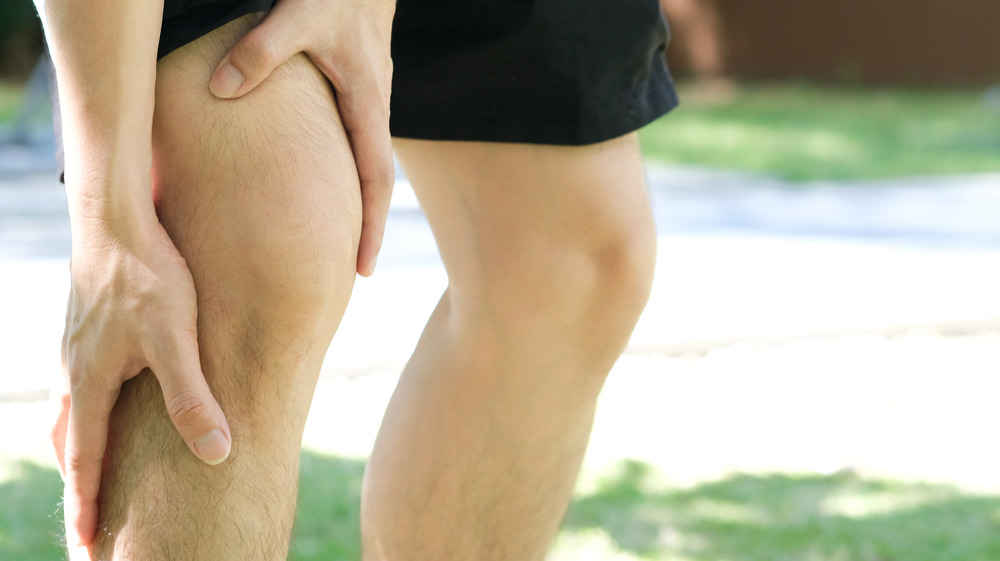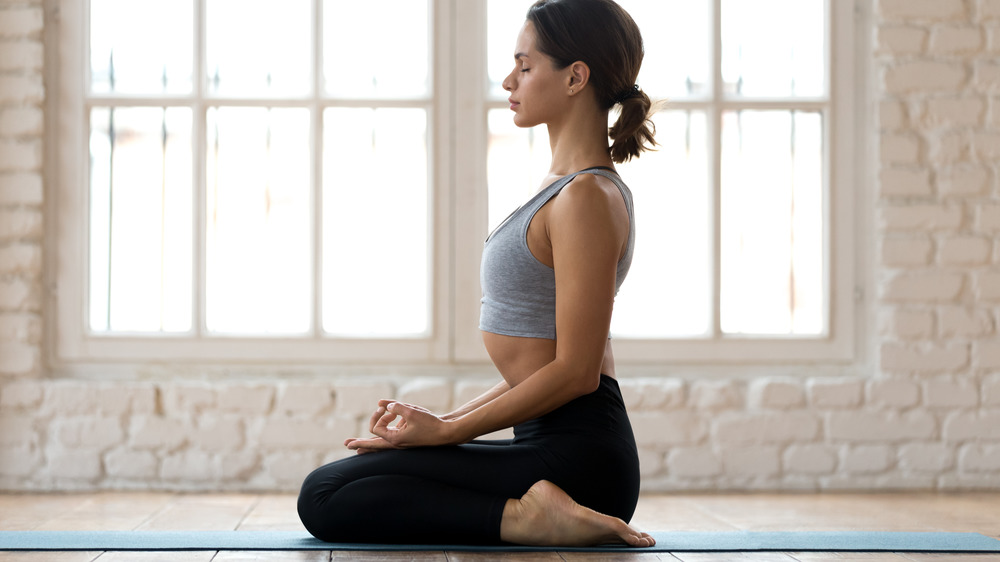Why You Should Think Twice Before Sitting On Your Knees
Sitting on your knees — sometimes called W-sitting because of the shape your legs make when configured underneath you — puts a lot of pressure on delicate structures. If you're experiencing knee pain at other times throughout the day, like when walking or running, you may want to take a look at how you're sitting.
"Life can really go downhill when you damage your knees," sports medicine specialist Nicholas DiNubile told WebMD. Straining your knees by pulling on the muscles and tendons around them while also adding load (your body weight on top of them) is potentially setting you up for a knee injury — and WebMD reports that 15 million Americans head to the doctor every year with knee pain.
The W-sit position adds stress to the cartilage in your kneecaps, and sitting on your knees can also slow circulation to your feet, and cause ankle stiffness as well. If you already have a knee issue, sitting on your knees can make it worse (via Healthline).
How should you sit instead?
Luckily for W-sitters, there is a way to sit on your knees that won't harm them. Sitting with your shins directly under your thighs and the tops of your feet flat on the floor — essentially starting from a kneeling position and sitting back into it — won't stress your knees. In fact, it's a yoga staple: hero's pose. But if your shins and feet start to scoot out to either side, opening into that W-shape, your knee is tracking in a way that it's not designed to stretch (via Yoga International).
Regardless of how you choose to sit, make sure you're switching up positions regularly: Go from cross-legged to sitting with your legs straight, stand up and move around if you've been sitting at your desk all morning, and generally avoid keeping your joints in any one position for too long (via Panetta Physical Therapy).
If you have knee pain, address it early, since it can easily worsen over time. Do the physical therapy exercises recommended by an expert, and speak to a doctor early, especially if you have knee pain that comes on quickly, since that may indicate a muscle or tendon tear.


